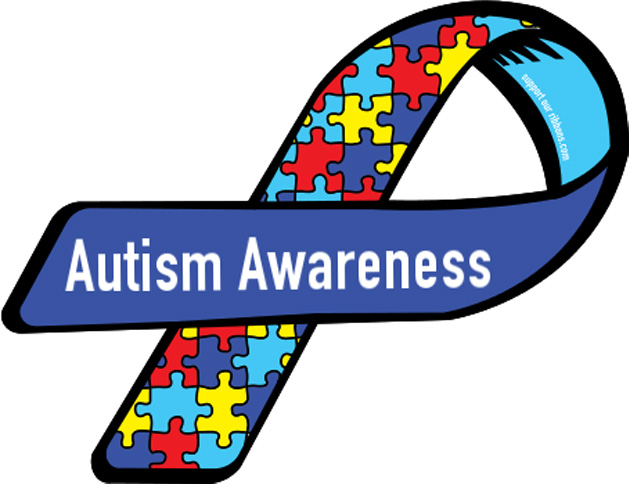
Compiled by Indiana Resource Center for Autism and Autism Society of Indiana Remember that each person is different, and specific tips may not apply to all. General Tips
• Efficient organization skills can be an area of challenge (i.e. completing homework but forgetting to turn it in; messy desks/lockers, etc.). These issues can impact academic performance, so a proactive support strategy is recommended. This may include written checklists and reminders combined with direct guidance and instruction. Eventually, individuals can be taught to generate their own checklists and reminders.
• Teaching individuals to advocate for their own needs is an important skill that can ease the transition from school age to adulthood. It could be as simple as teaching them to request their favorite food by handing you a picture, or for someone with more verbal skills, to explain their communication and accommodation needs to their college professor.
• Behavior can be a form of communication, particularly for those whose skills in communication are greatly impacted. To determine a pattern, pay attention to what occurs right before and immediately after a behavior. If you are stumped, ask other parents and professionals what might be the underlying cause(s) of behaviors.
• Know that just because an individual may be nonverbal, he or she is still able to hear and understand much of what is said around them. Make sure all messages are positive.
• Perspective-taking is a challenge for many individuals on the autism spectrum. When watching a movie or looking at pictures of people, practice these skills by asking them questions about how the person is feeling, what they are thinking, and what they are going to do next. Have them explain and point out the specific cues that support their ideas.
• It is important to teach individuals on the autism spectrum social skills. Turn-taking and social distance are skills that may not come naturally and need to be taught.
• Every individual is different, so it’s important to be mindful of sensory input in the individual’s environment. Consider the visual input (e.g. fluorescent or bright lights), auditory input (e.g. loud noises), tactile input (e.g. certain surfaces, textures, fabrics), and smell/tastes (strong perfumes or certain food textures) that may be bothering the individual with an autism spectrum disorder. If these sensory issues are not addressed, repetitive behaviors and a failure to respond to certain relevant stimuli may develop.
• Break tasks down into smaller steps. Showing pictures of each step, modeling the task, and saying each step out loud can help facilitate learning. Set students up for success and provide rewards when goals are reached.
• Try to keep language as simple as possible by using minimal words when making your point or providing information. Avoid the use of sarcasm and idioms, as these may be taken literally.
• Unstructured activities and wait time can be a source of anxiety and confusion for some individuals. Specific directions and checklists of what to do during unstructured activities can be beneficial. Bringing a “wait time” activity (i.e. books, toys) can ease this anxiety.
• Individuals on the spectrum will read our emotional level about a situation. Use a calm tone of voice and avoid physically touching the individual, even in the midst of a behavioral outburst. Excited adults yield excited children. Practice your poker face.
• Many individuals with autism spectrum disorder may be less likely to communicate for social purposes and will need to practice their conversation skills. This may include talking about a topic that is not their special interest, staying on topic, turn taking, asking related/appropriate questions, checking for their conversation partner’s understanding and predicting what information their partner may or may not know about a concept or situation.
• Some individuals will engage in restricted and repetitive behaviors because they have a limited repertoire of alternative behaviors and interests. It is important to expose individuals with ASD to a variety of activities and experiences and explicitly teach them leisure skills. Tips for Parents and Caregivers
• Keep a record of treatment options and medications you try and how your child responds to each one.
• Many times, an individual with ASD will display an undesirable behavior due to the lack of ability to communicate. Augmentative and alternative communication (AAC) is a communication method that can replace speech or writing. If a child with ASD is having difficulty communicating or being understood, they may benefit from some type of AAC. It is your right as a parent to ask your child’s teacher for an AAC evaluation or to question if and how your child could benefit from AAC.
• Getting dressed, eating breakfast, and brushing teeth are activities for which some individuals with ASD may require assistance. Create routines by doing these activities at the same time and in the same way every day.
• Help your child play with others. Teach them to share and take turns using visuals, modeling, prompting and practice. Host a play date at your house, where your child has more control over the activities, and you can control the amount and type of stimulation. When your child shares and takes turns appropriately, praise and reinforce this behavior.
• When building friendships for teens or adults with ASD, connect them with people who have similar interests (e.g., attending a Japanese Anime conference or enrolling in a chess club). This is likely to be more effective than attempting to teach them to interact around interests that seem more typical for their age group, such as team sports.
• Sleep issues are a common problem for individuals on the autism spectrum. Children and adolescents should keep a consistent bedtime routine, have a regular sleep/wake schedule, and avoid caffeine and screen time before bed.
• Acknowledge and celebrate the accomplishments of yourself (regardless of your role), of all family members, and of the individual whether they are small or large. For some on the autism spectrum, small steps are a major accomplishment. Be proud and remember that all accomplishments are important. In addition, family members please do not forget to acknowledge the accomplishments of your other children and spouse or partner whether large or small. Tips for School Personnel.
• In order to determine intervention effectiveness, baseline data must be collected before implementation. Data should be collected before, during, and after intervention. This will allow personnel to determine what (if any) alterations need to be made to the strategy.
• Use highly motivating reinforcers, such as fixations or fascinations, to teach a new skill or behavior. The use of surveys or sampling procedures will ensure the reinforcer is truly motivating for the learner. Be sure all staff know what skill is being reinforced, how often, and the importance of consistency
• Remember to individualize visual supports to match the student’s abilities and interests. Do not overwhelm the learner with visual supports and make sure each serves a real purpose. Visit the website at the Indiana Resource Center for Autism at https://www.iidc.indiana.edu/pages/visualsupports for a full catalog of visual supports.
• When considering accommodations at school, it’s important to find a balance. Accommodating students too much may eliminate options in the future.
• For some, breaks and calming strategies should be considered as part of the daily routine. Inconsistency in schedules can cause some individuals to feel overwhelmed, so a pre-determined routine should be implemented daily. Providing breaks and calming techniques only after a problem behavior occurs may inadvertently increase the likelihood of that behavior occurring in the future. By using a respectful and proactive approach, the individual will build self-esteem and confidence, as well as reduce anxiety.
• If a student is not able to perform a task, consider whether the request is too abstract. For example, telling a student to write a story about something that interests them is very abstract. One strategy is to provide specific choices.
• Uncertainty creates anxiety that increases the risk of tantrums, aggression, and meltdowns. Individuals on the autism spectrum need reassurance and information about upcoming events and changes. They may benefit from having a schedule of daily events and/or reading social stories about changes to their schedule that they are about to experience (e.g. social story about fire alarms or school assemblies). If a change is made to a plan or strategy, call parents and ask them to help prepare their child for the plan as well.
• Individuals with ASD often have difficulty generalizing skills from one setting to another. A student who has learned to initiate conversations within the lunchroom may not be able to initiate conversations on the playground. They may need to be taught skills across different settings, people, and activities.





